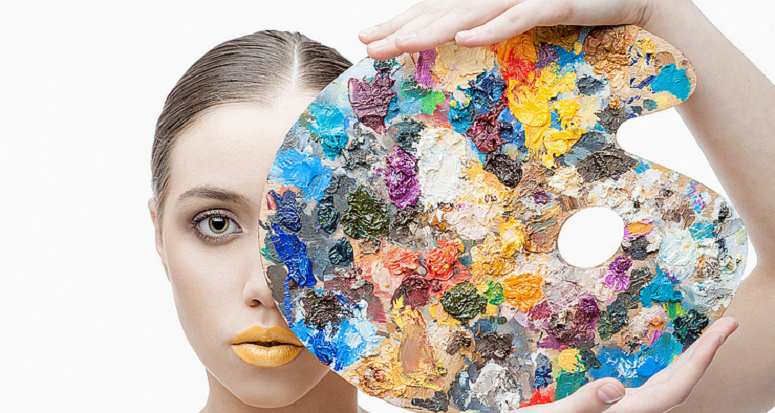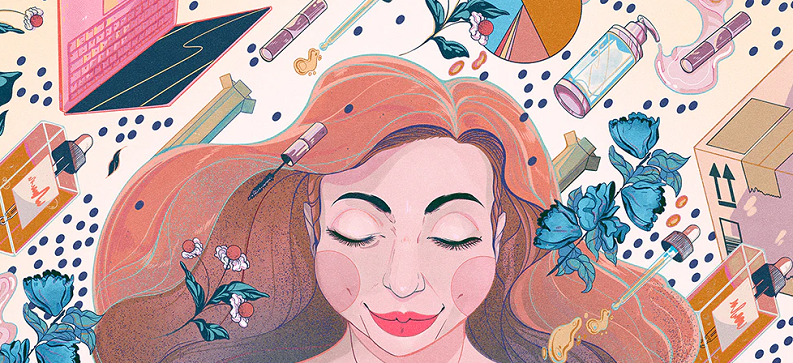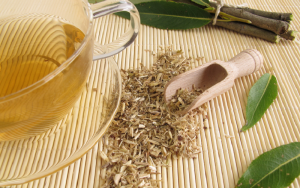
The vibrant world of art is where creativity, passion, and dedication meet. But beyond the canvases and palettes, there lies an overlooked aspect that every artist should consider – skincare. Often, artists are so immersed in their work that they overlook the potential hazards posed by their materials. Paints, pastels, inks, and more are not just mediums for expression; they can also contain harmful substances that can affect the skin’s health.
Contents
Introduction to Skincare for Artists
The world of art is a fascinating realm, a unique universe that combines boundless creativity with a spectrum of materials, tools, and techniques. Yet, in the flurry of producing captivating pieces, the health implications that these materials might pose, especially to the skin, are frequently overlooked. Artists’ hands are their primary tools, and they often come in direct contact with a range of art materials, from paints to pastels, charcoal to clay. This is why skincare for artists is a crucial, albeit frequently ignored, aspect of their overall well-being.
Brief Overview of Skincare for Artists
Artists, particularly those who work with their hands, must understand the importance of skincare as an integral part of their routine. While engrossed in their creative process, they can unwittingly expose their skin to a cocktail of chemicals. These chemicals, over time, may lead to skin irritation, allergic reactions, and even chronic skin conditions. Consequently, it becomes vital for artists to be informed about the impact of their art materials on their skin and learn about protective measures they can adopt.
Importance of Protecting Skin from Art Materials
Human skin serves as the first line of defense against various environmental hazards, and the same holds true in an artist’s studio. Paints, glues, solvents, and other art supplies may contain chemicals that can be harsh on the skin, leading to immediate and long-term issues. Immediate effects can range from dryness and irritation to allergic reactions. Long-term, these materials could potentially lead to dermatitis, a condition marked by inflamed, itchy skin.
Some substances found in art materials can be absorbed through the skin and lead to systemic health issues. Hence, taking measures to protect the skin is not just about maintaining its appearance and health, but also about preserving the artist’s overall health and wellness. The forthcoming sections of this blog post aim to equip artists with essential knowledge and practical strategies for skin protection amidst their creative pursuits.
Understanding the Effects of Art Materials on Skin
Before we delve into the steps artists can take to protect their skin, it’s essential to understand what they are protecting it from. Different art materials have varied chemical compositions, and each can affect the skin in unique ways. By gaining an in-depth understanding of the effects these materials can have on your skin, you can better equip yourself to mitigate any potential harm.
Chemical Composition of Different Art Materials
Art materials often contain a variety of chemicals, some of which can be harmful to the skin. Let’s break down some of the common materials used by artists and examine their chemical constituents [1].
Acrylic Paints
Acrylic paints are a popular choice for many artists due to their versatility. However, they can contain ammonia and formaldehyde, both of which can cause skin irritation. Some may also include heavy metals in pigments, which can pose health risks over time.
Oil Paints
Oil paints are traditionally composed of pigments mixed with drying oils, commonly linseed oil. Certain pigments used can contain heavy metals like cadmium, lead, and chromium, which can be harmful when in prolonged contact with the skin.
Pastels
Pastels are essentially pigment and a binder, often gum arabic, combined into a stick form. The pigments used can sometimes contain heavy metals, similar to those found in oil and acrylic paints. Plus, due to their powdery nature, pastels can dry out the skin.
Inks
Inks, particularly those used in printmaking, can contain solvents, resins, and pigments that may be harsh on the skin. In addition, certain inks, such as black tattoo ink, may contain materials like carbon black, which can cause skin irritation and allergies.
How These Materials Impact Skin Health
While it’s true that not everyone will experience adverse effects from exposure to art materials, it’s important to know the potential risks. The chemicals found in these materials can lead to skin dryness, inflammation, allergic reactions, and in some cases, serious dermatological conditions. Moreover, the risk is not only restricted to skin contact. Some harmful particles can become airborne during the creative process and settle on the skin, posing additional risks [2].

Common Skin Problems Among Artists
Just as each artist has a unique style and approach, the way their skin reacts to art materials can also differ greatly. However, there are some common skin problems that artists may face due to the nature of their work. Knowing what to look out for can help you take swift action if you notice any changes in your skin.
Skin Irritation
Skin irritation is one of the most immediate and common reactions to harsh art materials. This may present as redness, itching, burning, or a feeling of tightness in the skin. This can occur as a result of direct skin contact with irritants present in various art supplies or due to the drying effect of certain materials, like pastels and clay.
Contact Dermatitis
Contact dermatitis is a type of skin inflammation that occurs when the skin comes into direct contact with an allergen or irritant. This condition can cause a range of symptoms, from redness and itching to swelling, blistering, or even peeling. If you’re working with materials that contain potential irritants or allergens, such as certain paints and glues, you may be at risk of developing contact dermatitis [3].
Long-Term Skin Conditions
While immediate reactions are relatively common, prolonged exposure to harmful chemicals can also lead to long-term skin conditions. This can range from chronic dryness and eczema to more serious conditions like skin discoloration or dermatitis. Furthermore, some art materials contain carcinogens, which have been linked to skin cancer. While such extreme cases are not the norm, they highlight the importance of taking your skin’s health seriously as an artist [4].

Basic Skincare Routine for Artists
Just as a well-prepared canvas can make a world of difference to the artwork, a well-cared-for skin can be pivotal in an artist’s overall health and well-being. An effective skincare routine does not need to be complicated or time-consuming; it merely needs to be consistent.
Importance of Cleansing
Cleansing should be your first step in your skincare regimen. As an artist, your hands and possibly your face might come into contact with various art materials throughout the day. Using a gentle cleanser can help remove these substances from your skin’s surface. Cleansing is especially important at the end of the day to ensure that no harmful materials remain on your skin while you sleep.
Choosing the Right Moisturizer
Art materials can often be drying to the skin. Moisturizers are essential to restore hydration and maintain your skin’s health. Look for products that contain ingredients like hyaluronic acid, ceramides, or glycerin that are known for their hydrating properties. If your skin is particularly sensitive or prone to reactions, you might want to opt for fragrance-free and hypoallergenic products. Remember to moisturize your hands regularly as they are often in direct contact with art materials [5].
The Role of Sunscreen in an Artist’s Skincare Routine
You might be thinking, “I spend most of my time inside a studio; do I really need sunscreen?” The answer is a resounding yes. UV rays can penetrate windows and cause damage to your skin. Plus, if you’re an artist who often works outdoors, sunscreen is a must. Look for a broad-spectrum sunscreen with at least SPF 30 to protect your skin from both UVA and UVB rays. Apply it daily on exposed areas, including your face, neck, and hands.
Protective Measures to Avoid Skin Contact with Art Materials
Just as a knight wouldn’t go into battle without armor, an artist shouldn’t begin their creative process without proper protection. While it’s not always possible to avoid skin contact with art materials entirely, certain protective measures can drastically reduce the risk of skin issues.
Using Gloves and Protective Clothing
The simplest and most effective way to prevent direct contact with art materials is to wear gloves. Nitrile or vinyl gloves are a good choice as they offer protection and still allow for a good range of movement. If you’re working with materials that can splash or spill, consider wearing an apron or smock to protect your skin and clothing. Also, wearing long sleeves can provide an added layer of protection for your arms.
Using Barrier Creams
Barrier creams act like an invisible glove, providing a protective layer between your skin and potential irritants. These creams are usually applied before you start working and can be especially useful if you find gloves restrictive. While they do not offer complete protection against all art materials, they can help prevent skin dryness and irritation.
Proper Ventilation and Avoiding Airborne Particles
Some art practices can generate dust or fumes that can settle on your skin and cause irritation. Working in a well-ventilated area or using an extraction fan can help minimize this risk. If you’re doing anything that generates a significant amount of dust, such as sanding or using spray paints, consider wearing a protective mask in addition to your other protective gear.

Choosing Skin-Safe Art Materials
As an artist, the materials you choose not only shape your art but also influence your health. Choosing skin-safe art materials is an empowering step towards a healthier artistic practice. Here are some strategies to help you make informed decisions about the materials you work with.
Importance of Reading Material Safety Data Sheets (MSDS)
Before using any new art material, make it a habit to read the Material Safety Data Sheet (MSDS). This document contains information about the material’s composition, potential hazards, handling instructions, and first-aid measures. By understanding the potential risks associated with a material, you can take necessary precautions to protect your skin and overall health [6].
Alternatives to Traditional Art Materials
Thanks to advancements in the art industry, there are now numerous alternatives to traditional art materials that are gentler on the skin. For instance, water-mixable oil paints are a less toxic alternative to traditional oil paints, reducing the need for harsh solvents. Similarly, natural pigments and plant-based inks can offer safer alternatives to those with heavy metals or other harsh chemicals.
References
[1] Side Effects of Handling Art Materials
[2] Toxic Chemicals. Here’s How to Avoid Harming Yourself and the Environment
[3] Art and Craft Safety Guide
[4] Are Your Art Supplies Toxic?
[5] Paints, Dyes, Inks
[6] Chemicals and Other Hazards In Painting







